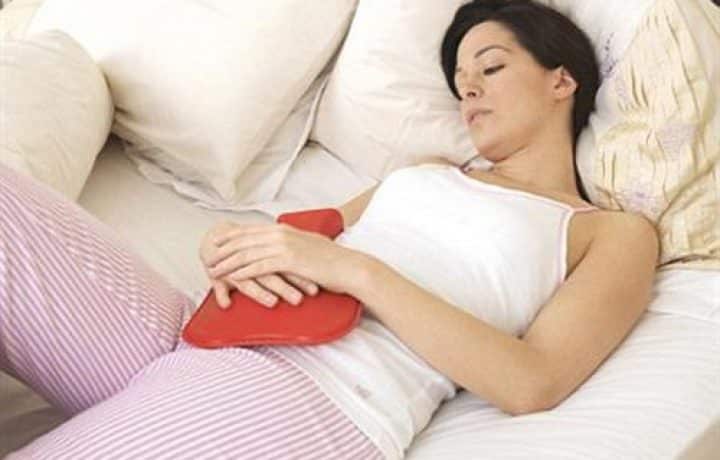Headache and migraine
These are lumped together because, at least from the acupuncture point of view, there is little need to separate them.
Acupuncture works pretty well for headaches – over 70 per cent response rate. It works best as a preventive, although it can sometimes abort a headache if done early enough. (It can also bring on an attack.) It seems to be pretty ineffective in the treatment of continuous or daily headaches. Note that acupuncture can mask headache due to a serious underlying lesion (e.g. a tumour).
PAGE CONTENTS
Local treatment consists mainly in needling the neck and base of the skull: G 21, G 20.5, G 20. Some people have active TPs at the sides of the head, especially in the temporalis muscles, and these can be treated as well.
General treatment consists in needling remote points, especially Lr 3 but also LI 4.
How to choose which to try first: One should always look for TPs in the head and neck, and as a rule these should be treated if they are present. However, Lr 3, if it works, has certain advantages: it is less painful, and it is suitable for self-acupuncture. I often try it before I needle the neck, especially in people with classic migraine (visual aura) or who seem to be genuinely sensitive to cheese, chocolate etc.
The results of treatment of migraine in children are outstandingly good. A single very brief (1 second or less) needle insertion at Lr 3 will often give several months’ relief from severe migraine.
Cluster headaches
These seem almost never to respond.
Trigeminal neuralgia
This responds well in about 60 per cent of cases. This responds well in about 60 per cent of cases. “In my practice the condition will settle with the addition of acupuncture [to drug treatment] in at least half of patients, to the extent that it may be possible to reduce their tablets while maintaining adequate control of the pain. Few treatments can be argued to be safer.” [Jenny Jessop, Consultant in pain management, Montague Hospital, Mexborough, S Yorkshire; letter in BMJ, 15 Feb 1997, p. 520.] In some cases superficial needling over the painful area is adequate, but I generally use a technique of deep needling in the infratemporal fossa (‘needling the sphenopalatine ganglion’). This can be done with the patient sitting but I usually prefer to have him or her lying, with the affected side uppermost. The needle is passed under the zygomatic arch and just in front of the ramus of the mandible, slightly backwards and slightly upwards, to a depth of about 25 mm. Gentle stimulation can be given for 30 seconds or so.
Atypical facial pain
This responds less well than trigeminal neuralgia, probably because there is usually a large psychological component. The treatment described in the preceding paragraph can be tried but it is usually better to try needling painful areas in the masseter or temporalis muscle; there may also be TPs in the neck.
Clonic facial spasm (facial myoclonus)
This is a motor disorder of unknown cause; it is not the same as blepharospasm. It is unilateral. Most patients respond fairly well to needling of branches of the infraorbital nerve as they fan out over the maxilla. Some have TPs in other sites on the face which work better.
Vertigo
Vertigo in elderly patients can sometimes be helped. In such cases the problem seems to lie in the facet joints of the cervical vertebrae, which are sending erroneous proprioceptive impulses to the vestibular nuclei. Periosteal needling of the cervical vertebrae can help. Acupuncture is unlikely to do much for true Menière’s disease.
Tinnitus
Tinnitus is generally not suitable for acupuncture. However, there are some patients whose tinnitus seems to be due to an injury to the neck which has activated TPs there. Possibly the mechanism is abnormal contraction of the stapedius or tensor tympani muscles. Acupuncture can work well in such cases.
Carpal tunnel syndrome
This responds well to periosteal needling of the cervical vertebrae.
Epilepsy
Experience suggests that this is not likely to improve. However, a recent clinical trial from the Maudsley Hospital (Dr Richard Petty) does seem to show some benefit, and the patients’ level of emotional and psychological functioning was particularly improved.
Hay fever
This responds in about a third of cases. One can try general stimulation (Lr 3, LI 4) or needle the sinus areas (see below).
Chronic rhinitis
This can sometimes be helped. Acupuncture is effective for repetitive sneezing, less so for nasal blockage, and relatively ineffective for rhinorrhoea. It works best if there is a presumed allergic component, which means it is best for younger patients. The treatment I mainly use is periosteal needling over the frontal and maxillary sinuses.
Psychological disorders
Acupuncture is not generally a major treatment for psychological problems. However, some patients suffering from mild anxiety and depression seem to be helped; I find that needling the neck and shoulders, especially G 21, seems to act as well as anything else. G 21 comes into many ‘cookbook’ recipes, perhaps because it has this minor tranquillizing effect.
An interesting effect sometimes seen after acupuncture almost anywhere in the body is emotional abreaction. Patients may laugh or cry uncontrollably for a long time, even for several hours. This suggests that there is a reciprocal relationship between TPs and psychological tension. It is as if the ‘memory’ of emotional stress can somehow become locked into a TP; needling the TP can bring the emotion back into activity, although not usually in relation to any particular conscious memory.
